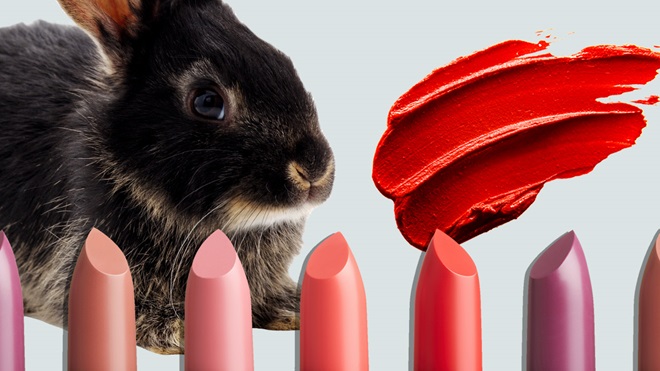Even if wearing lipstick isn't your thing, you probably use a number of toiletry and personal care products — from soap, shampoo and toothpaste, to deodorant, moisturiser or shaving cream. All of these are generally safe if used as intended.
To establish their safety, though, some of these products may have been tested on animals. And for a lot of people, smelling nice just isn't worth that price. So how can consumers work out which products are tested on animals? And what are the alternatives to animal testing?
On this page:
- What the law says about animal testing
- Animal testing alternatives
- What to look for when shopping for cruelty-free cosmetics
- Animal testing and China
- Three ways you can make a difference to animal testing in Australia
We're on your side
For more than 60 years, we've been making a difference for Australian consumers. In that time, we've never taken ads or sponsorship.
Instead we're funded by members who value expert reviews and independent product testing.
With no self-interest behind our advice, you don't just buy smarter, you get the answers that you need.
You know without hesitation what's safe for you and your family.
And you'll never be alone when something goes wrong or a business treats you unfairly.
Learn more about CHOICE membership today
What the law says about animal testing
Australia doesn't require cosmetics to be tested on animals, as long as suppliers can provide evidence for their ingredients' safety. In fact, with a growing global trend towards the banning of cosmetics that are tested on animals (the European Union, India and Israel have led the charge), there are moves afoot for Australia to follow suit.
Animal testing alternatives
There are many ways to establish a cosmetic product's safety without the use of live animals, such as:
- in-vitro techniques involving donated human tissue or cell cultures
- using donated human corneas from eye banks, or synthetic or reconstructed human skin
- using human volunteers
- computer modelling and maths simulation programs, for example to predict a chemical's toxicity or irritancy and its likely interaction with other compounds, based on what's known already about substances with a similar structure.
What to look for when shopping for cruelty-free cosmetics
Third-party certification
There are several independent third parties that certify products as having not been tested on animals, including the Leaping Bunny and PETA. These organisations:
- compile lists of companies that sign statutory declarations promising they do not test nor allow others to test on their behalf any products or ingredients on animals
- do not certify companies that sell their products in markets like China, where animal testing is required.
However, it's important to note that in some cases even companies that abstain from the Chinese market may be penalised by the certifiers on the basis of their parent company's stance on animal testing.
Official logos
Not all logos are created equal; just because they've put a bunny on it, doesn't make it cruelty-free. Look for an official logo from one of the third-party certifiers.
Labelling loopholes
Labelling claims on cosmetics must comply with various state and federal laws, but the use of terms such as "not tested on animals" or "against animal testing" on cosmetics packaging isn't specifically regulated. We've found that manufacturers take liberties with the interpretation of such claims, and as most of the animal testing occurs overseas or during the supply chain, rather than while making the finished product, they don't fall foul of the Australian Competition and Consumer Commission.
Animal testing and China
Currently, all cosmetic products sold in mainland China must be registered with the authorities. To become registered, companies are required to submit a dossier to a government authority along with product samples for the authority to test.
The authorities then do a number of tests, including for pH [levels] and viscosity. They also conduct skin and eye irritation tests. At the moment, these tests are done on animals. This means that samples of products that are currently sold in China must, by law, be provided for animal testing.
Changes announced to China's animal testing laws
China recently announced that it's phasing out its requirement that new, domestically-manufactured, "ordinary" cosmetics and personal care products be tested on animals this year. Companies will instead be allowed to conduct their own product risk assessment using ingredient safety data, which can be gained from non-animal testing methods, provided the methods are deemed scientifically valid by the EU.
However, it's not all good news. Foreign-manufactured cosmetics (unless they're packaged in bulk in China) will still have to be animal tested, as will "special-use cosmetics" such as hair dyes, antiperspirant deodorants, sunscreens and skin-whitening products.
And the larger issue is that regardless of the pre-market testing requirements, Chinese authorities still carry out post-market testing of all products on Chinese shelves, so any product sold in China (and any company that sells its products in the Chinese market) is tainted by animal testing. If that matters to you, you can get in contact with the manufacturer of your favourite products and ask if they're on shelves in China.
Three ways you can make a difference to animal testing in Australia
- If you can't find a product on a 'cruelty-free' list, check with the manufacturer or Australian distributor. Don't accept a generic "we're against animal testing" statement.
- Apply pressure: if you decide against buying a product because of the brand's involvement in or lack of transparency about animal testing, let the company know.
- Avoid products with 'new' or 'improved' ingredients if you can't establish that they haven't been tested on animals.
Stock images: Getty, unless otherwise stated.



